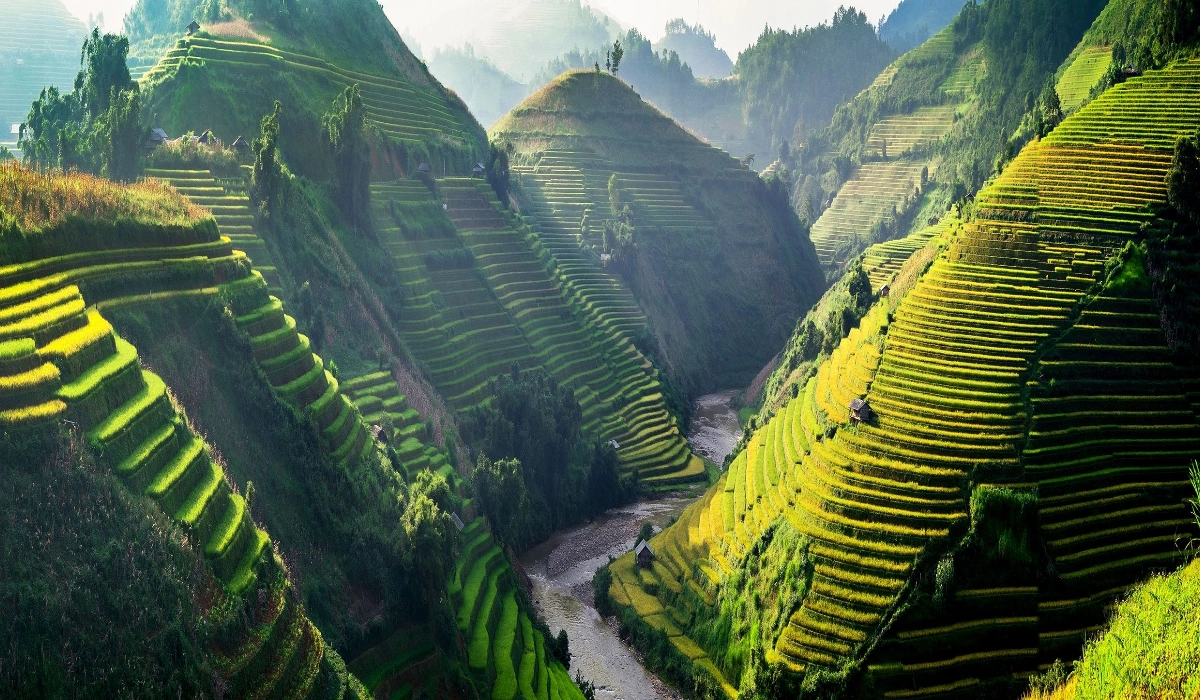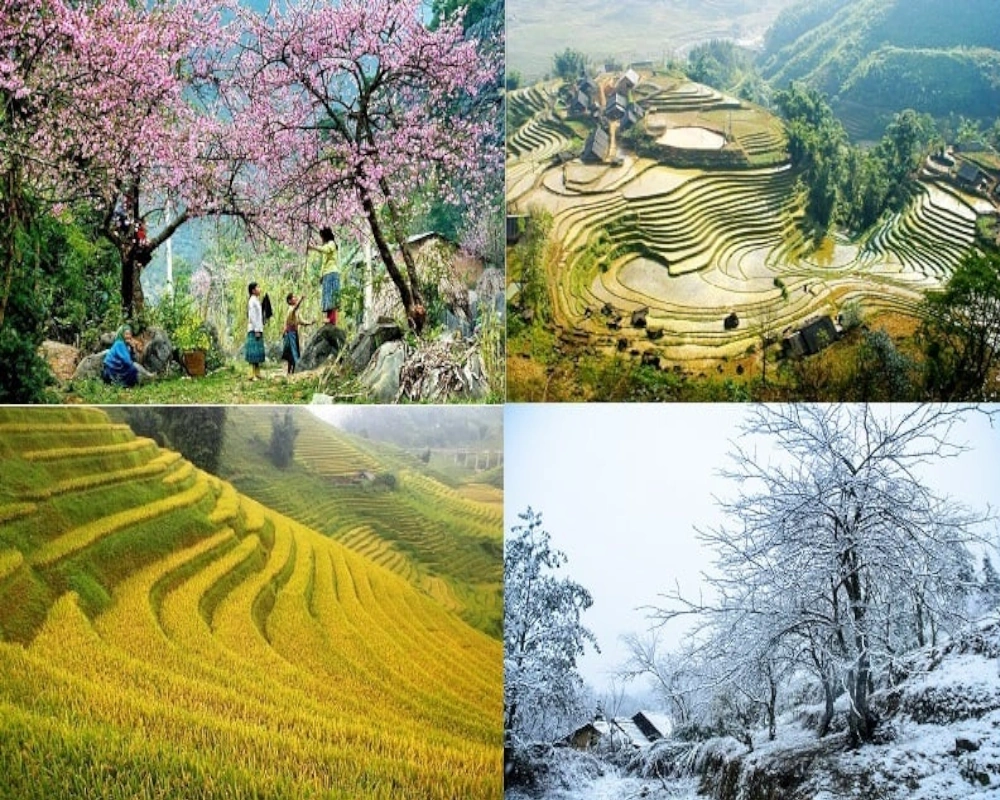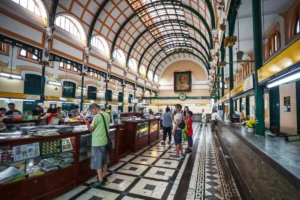
Vietnam Climate Guide: Discover the Best Time to Visit Month-by-Month
Vietnam is a beautiful destination known for its diverse landscapes, rich culture, and varying climate across its regions. Understanding Vietnam’s climate can help you plan the perfect trip, ensuring that you visit at the best time to enjoy everything this vibrant country has to offer. From the cool northern mountains to the tropical southern beaches, this guide provides a month-by-month breakdown of Vietnam’s climate and the best times to explore each region.
Understanding Vietnam’s Climate
Vietnam’s climate varies significantly across three main regions: North, Central, and South. Each area has distinct weather patterns influenced by the country’s topography and monsoon seasons. Knowing the climate of each region will help you determine the best time to visit Vietnam.
Northern Vietnam (Hanoi, Ha Long Bay, Sapa): This region experiences four distinct seasons, including a cool winter and a hot, humid summer. The best time to visit Northern Vietnam is from October to April when the climate is dry and cool, ideal for sightseeing and outdoor activities.
Central Vietnam (Hue, Da Nang, Hoi An): Central Vietnam enjoys a warm climate year-round but faces heavy rains and occasional typhoons from September to November. The ideal time to explore Central Vietnam is from February to August, with sunny, dry weather perfect for beaches and cultural sites.
Southern Vietnam (Ho Chi Minh City, Mekong Delta, Phu Quoc): Southern Vietnam has a tropical climate with two main seasons: dry (December to April) and wet (May to November). The dry season is the best time to visit Southern Vietnam, offering plenty of sunshine and lower humidity.
Month-by-Month Vietnam Climate Guide
January - February: Cool and Pleasant
Best Regions to Visit: Northern and Central Vietnam
Climate Highlights:
- North: The climate is cool, dry, and perfect for exploring Hanoi, cruising Ha Long Bay, and trekking in Sapa’s mountains.
- Central: Warm and sunny, making it ideal for beach visits in Da Nang, sightseeing in Hoi An, and exploring Hue’s historical sites.
- South: Hot and dry with clear skies, ideal for visiting Ho Chi Minh City and relaxing on Phu Quoc’s beaches.
Key Events:
- The Vietnamese Lunar New Year (Tet) often falls in late January or early February, bringing vibrant celebrations throughout the country.
March - April: Peak Travel Season Best Regions to Visit: All of Vietnam
Climate Highlights:
- North: Pleasant spring weather with warm temperatures, perfect for outdoor activities and sightseeing.
- Central: Warm and sunny, offering great conditions for beach activities, cultural tours, and exploring ancient sites.
- South: The last stretch of the dry season, featuring hot, sunny days with minimal rain, ideal for exploring the bustling city life and lush Mekong Delta.
Travel Tips:
- March and April are among the best months to travel to Vietnam due to favorable climate conditions across all regions. Book accommodations early as this is a popular travel period.
May - June: Transition into the Wet Season
Best Regions to Visit: Northern and Central Vietnam
Climate Highlights:
- North: The climate becomes warmer with rising humidity, but it remains a good time for sightseeing and trekking in the cooler highlands.
- Central: Hot and dry, perfect for beach lovers. Coastal cities like Da Nang and Nha Trang enjoy long sunny days.
- South: The wet season begins, marked by short, heavy showers mostly in the afternoon, but mornings are usually dry and suitable for exploration.
Key Attractions:
- Central Vietnam’s beaches remain less crowded during this time, providing a tranquil escape for visitors.
July - August: Peak of the Monsoon Season
Best Regions to Visit: Northern Vietnam and Central Highlands
Climate Highlights:
- North: Warm, humid, and occasionally rainy. The lush green landscapes make it a great time for photography and nature treks.
- Central: The coastal areas are affected by heavy rains and occasional flooding, but inland areas like Da Lat offer drier, cooler conditions.
- South: The monsoon season is in full swing with frequent downpours, although mornings are often clear and warm.
Key Attractions:
- The northern rice terraces are at their most vibrant during this period, making it an excellent time for trekking and experiencing rural life.
September - October: Transition to Dry Season
Best Regions to Visit: Northern and Southern Vietnam
Climate Highlights:
- North: Cooler temperatures and clear skies make it an ideal time to explore Hanoi, Ha Long Bay, and the northern highlands.
- Central: The rainy season peaks with potential typhoons, particularly along the coast, so it’s best to focus on inland areas.
- South: The climate starts to shift back to the dry season, with less rain and more sunny days perfect for outdoor activities.
Key Attractions:
- This is a great time for cruises in Ha Long Bay or exploring Hanoi’s rich cultural sites without the summer crowds.
November - December: Ideal Conditions for All Regions
Best Regions to Visit: All of Vietnam
Climate Highlights:
- North: Cool and dry weather provides perfect conditions for sightseeing, trekking, and city tours.
- Central: The dry season returns with sunny days, making it the perfect time to visit Hoi An, Hue, and Da Nang’s beaches.
- South: Comfortable temperatures and dry conditions dominate, allowing travelers to fully enjoy Ho Chi Minh City, the Mekong Delta, and beach resorts in the south.
Key Attractions:
- The end-of-year festive season brings a lively atmosphere, particularly in major cities, making it an exciting time to experience Vietnam’s urban culture.
Tips for Visiting Vietnam Based on Climate
- Dry Season (December – April): The best time to visit Vietnam’s major regions, with ideal weather conditions for outdoor activities, sightseeing, and beach holidays. It’s the peak travel season, so expect higher prices and more tourists.
- Wet Season (May – November): This period sees more rainfall, especially in the South, but the showers are usually brief. Travel during the wet season can offer fewer crowds and better deals on accommodations.
Conclusion
Vietnam’s varied climate means there’s always a good time to visit some part of the country. April is a particularly great month to explore both the North and South, despite common misconceptions about heavy rainfall. The diverse landscapes, rich culture, and delicious cuisine make Vietnam a year-round destination that can be enjoyed in every season.
Whether you’re exploring the ancient streets of Hoi An, cruising through the breathtaking Ha Long Bay, or soaking up the sun on Phu Quoc’s beaches, Vietnam’s unique climate ensures an unforgettable experience whenever you choose to visit. Understanding the month-by-month climate of Vietnam will help you make the most of your trip and experience the best of what this beautiful country has to offer.






